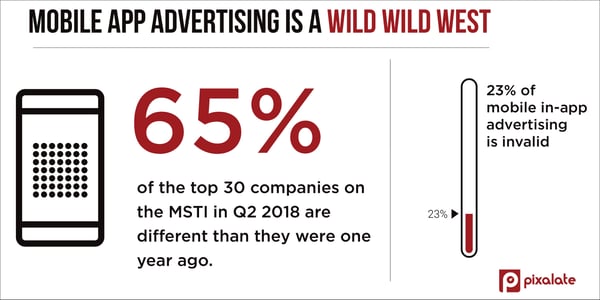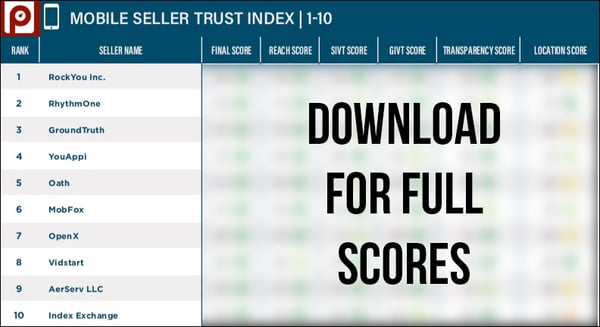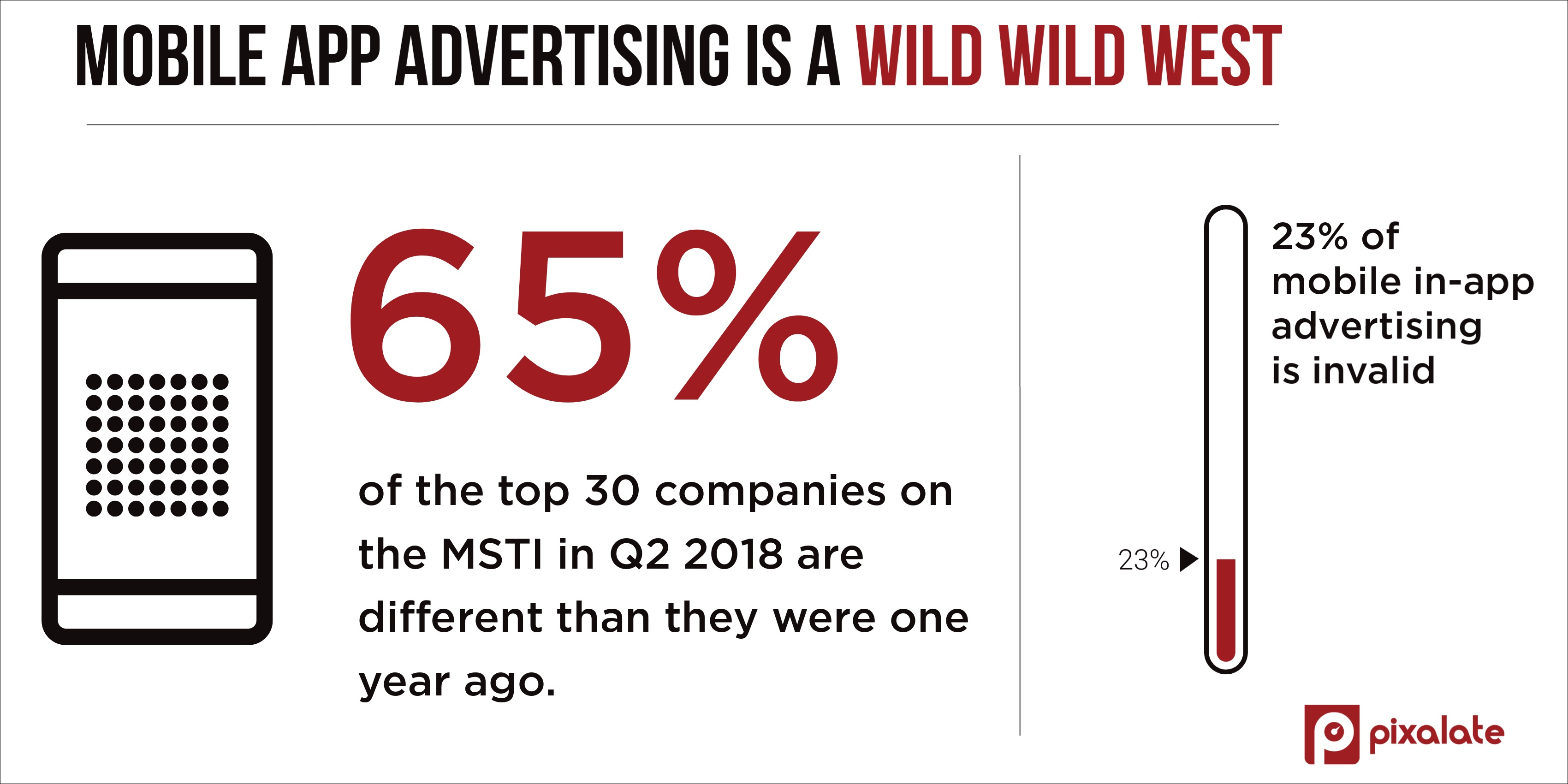The mobile in-app advertising landscape is rife with ad fraud. Pixalate’s Q2 2018 ad fraud benchmarks reveal that about 23% of mobile in-app advertising is invalid.
The ever-changing world of ad fraud – and the complexity of staying on top of the challenge — is reflected in our Seller Trust Indexes.
Pixalate this week released the Q2 2018 Mobile Seller Trust Index, and the latest leaderboard looks a lot different than it did one year ago — or even one quarter ago.

- Of the top 30 companies from Q2 2017, only 11 remain in the top 10 as of Q2 2018
- Of the top 30 at the end of 2017, 16 remain in the top 30
- Of the top 30 from Q1 2018, 19 remain
Nearly 65% of the top 30 mobile in-app programmatic ad sellers are different compared to one year ago.
The Wild Wild West of mobile app advertising
Each month, Pixalate reports on mobile in-app seller quality measurement. The chief consistency over the past 18 months has been suppliers' rankings volatility.
- Since the start of 2017, 34 different companies have ranked in the top 10 on the MSTI.
- Only two companies in the top 10 from Q2 2018 (Oath and OpenX) ranked in the top 10 at any point in 2017.
Mobile in-app ad fraud is difficult to control, and event amongst those that are well-equipped in the fight against fraud have challenges remaining on top.
Our latest MSTI highlights the fact that the mobile in-app advertising landscape is a Wild West. It is important for brands and advertisers to stay on top of their fraud rates, because the landscape is constantly changing. Fraudsters are sophisticated in mobile. Many of the top suppliers have some fraud protection in place, but, the volatility illustrates that bad actors are constantly thinking of new ways to circumvent those measures. With mobile suppliers constantly changing, you need a monitoring service that helps you assess potential new inventory sources.
The top 10 mobile app sellers of Q2 2018
Below are the top 10 mobile in-app sellers from Q2 2018. You can download the full list here:

About Pixalate’s Seller Trust Indexes
Pixalate’s monthly Global Seller Trust Index (GSTI), Mobile Seller Trust Index (MSTI), and Video Seller Trust Index (VSTI) are the worldwide standards in programmatic advertising quality ratings. Released monthly, the indexes evaluate and rank the quality and integrity of advertising networks and sellers across channels, platforms, and devices.
Global quality ratings are based on an analysis of overall effectiveness assessing multiple factors, such as viewability, fraud, engagement, domain masking, network quality and more, in compliance with recognized industry standards.
To learn more about the methodology and to download the expanded list of top sellers, visit http://www.pixalate.com/sellertrustindex.
About Pixalate
Pixalate is a cross-channel fraud intelligence company that works with brands and platforms to prevent invalid traffic and improve ad inventory quality.
About Pixalate’s Seller Trust Indexes
Pixalate’s monthly Global Seller Trust Index (GSTI), Mobile Seller Trust Index (MSTI), and Video Seller Trust Index (VSTI) are the worldwide standards in programmatic advertising quality ratings. Released monthly, the indexes evaluate and rank the quality and integrity of advertising networks and sellers across channels, platforms, and devices.
Global quality ratings are based on an analysis of overall effectiveness assessing multiple factors, such as viewability, fraud, engagement, domain masking, network quality and more, in compliance with recognized industry standards.
To learn more about the methodology and to download the expanded list of top sellers, visit http://www.pixalate.com/sellertrustindex.
About Pixalate
Pixalate is a cross-channel fraud intelligence company that works with brands and platforms to prevent invalid traffic and improve ad inventory quality.








